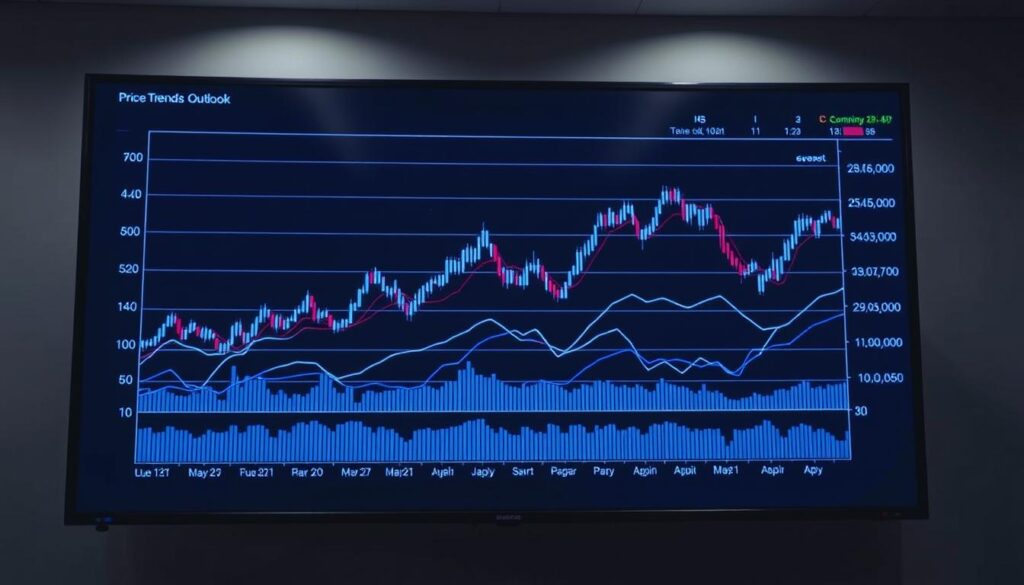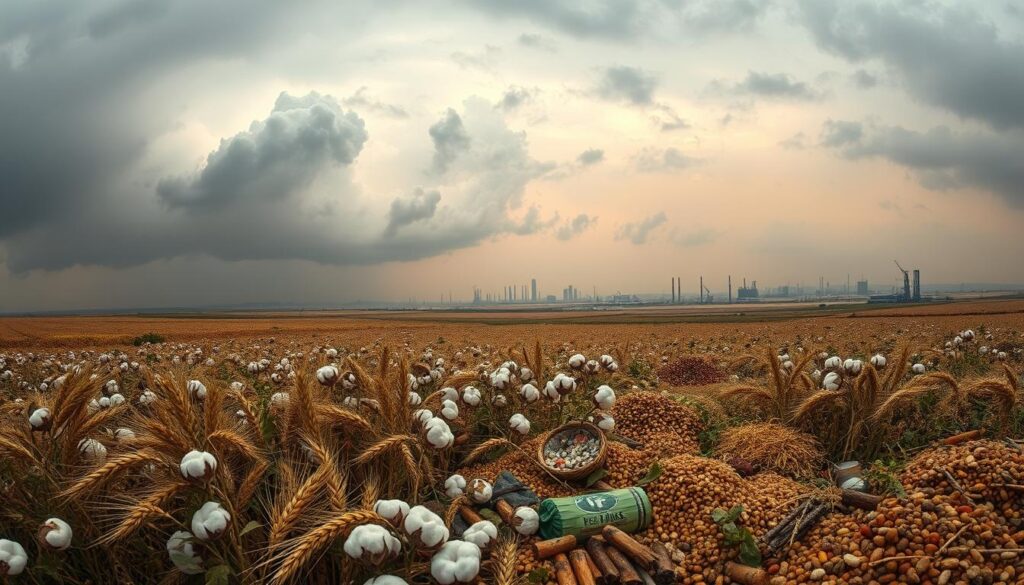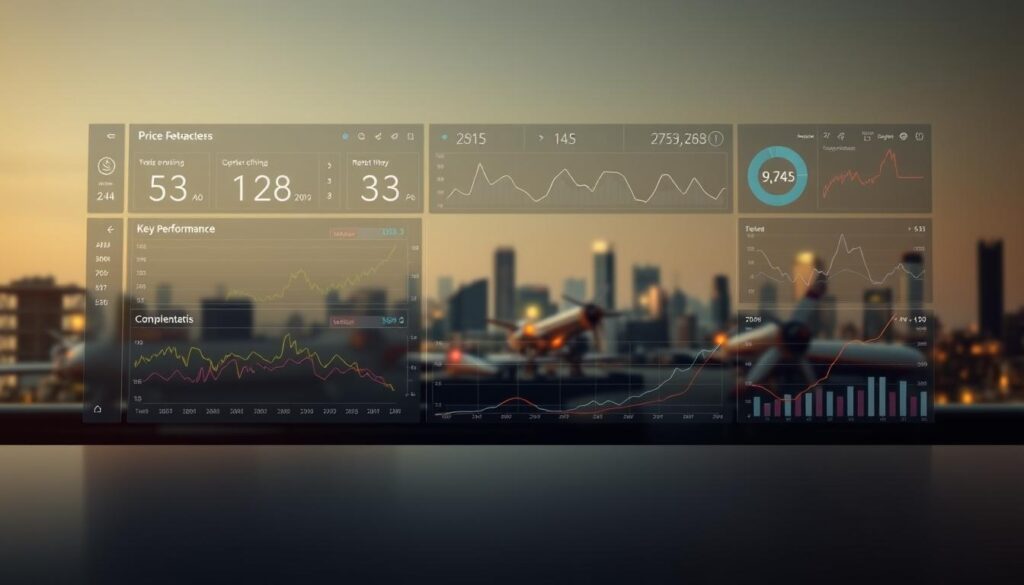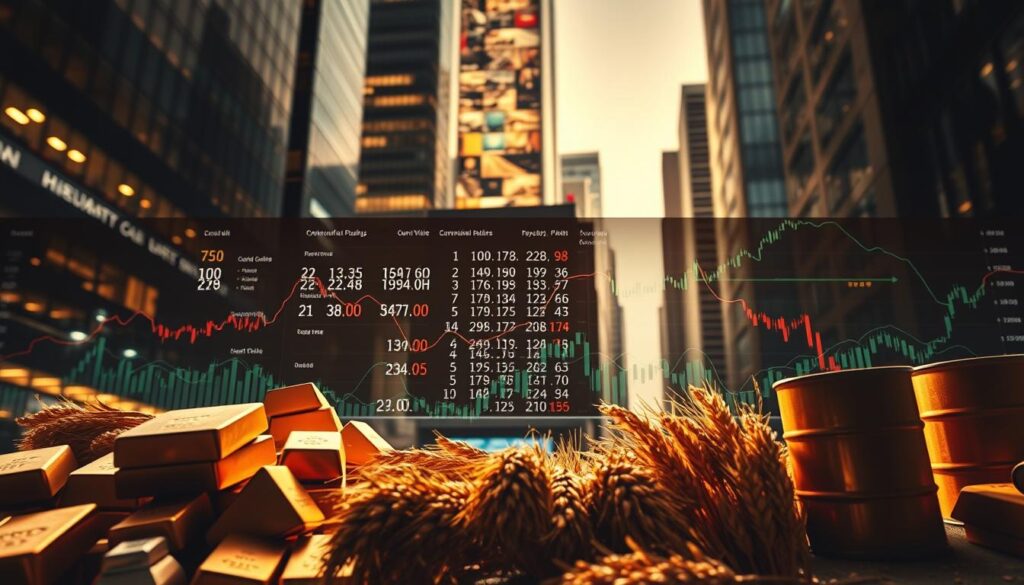Understanding the forces shaping global resource trading requires real-time insights. From energy to agriculture, shifts in supply chains and geopolitical tensions directly impact prices and availability worldwide. This analysis explores current trends, historical context, and emerging challenges influencing today’s trading ecosystems.
Recent data from the World Bank’s Pink Sheet highlights volatile crude oil forecasts, with natural gas and metals facing similar uncertainty. Conflicts like the war in Ukraine and Middle East disruptions have intensified risks for developing economies, while climate policies reshape agricultural production. Analysts emphasize the link between these factors and inflationary pressures.
The article draws on authoritative reports, including the IMF’s latest outlook, to assess how price shocks affect food security and energy access. It examines both physical trade flows and financial instruments like futures contracts, offering a balanced view of market mechanics.
Upcoming sections will detail historical trading frameworks, modern policy responses, and strategies for managing volatility. Designed for UK-based professionals, this research combines granular data with actionable insights to inform decision-making in an interconnected economy.
Understanding the Evolution of Commodity Markets
Global exchange mechanisms have transformed dramatically over centuries. Early societies relied on barter systems, swapping goods like grain for livestock without standardized values. These localized practices laid groundwork for structured agreements that shaped today’s financial frameworks.
From Handshake Deals to Standardized Contracts
Farmers in ancient Mesopotamia traded crops using clay tablets as receipts. By the 19th century, formal hubs like the Chicago Board of Trade emerged, creating uniform contracts for agricultural goods. This shift allowed predictable pricing and reduced risks from weather or spoilage.
Digital Platforms Reshape Global Access
Open-outcry trading floors dominated until computers revolutionized speed and accuracy. Real-time data flows now connect buyers worldwide, enabling 24/7 transactions across energy and metals. Despite automation, some markets still use physical deliveries for certain raw materials.
Regulatory frameworks evolved alongside technology. Transparency tools track origins of coffee or oil, addressing ethical concerns. These innovations maintain core principles from historical practices while expanding opportunities for developing economies.
Commodity Markets Outlook: Analyzing Trends and Price Shocks

Recent fluctuations highlight critical patterns shaping global trade dynamics. Third-quarter reports reveal uneven recovery across sectors, with energy and metals experiencing sharper volatility than agricultural goods.
Recent Price Movements and Data Analysis
World Bank Pink Sheet data shows copper prices dropped 12% since April due to surplus stockpiles. Meanwhile, Brent crude rose 8% in June amid Middle East shipping disruptions. Advanced analytics now detect these swings faster—machine learning models flagged 73% of 2023’s major price shocks before traditional indicators.
Agricultural oversupply presents contrasting challenges. Wheat inventories reached 9-year highs in Q2, yet retail bread costs remain elevated. This paradox stems from logistical bottlenecks and speculative trading activity, as shown in recent XLS exports from the International Grains Council.
Implications of Oversupply and Shifting Demand
Excess production in lithium and nickel markets threatens renewable energy projects. Storage costs for these metals jumped 18% year-on-year, per LME filings. Meanwhile, post-pandemic demand patterns show consumers prioritizing fuel efficiency over luxury goods, reshaping auto manufacturing priorities.
Geopolitical factors compound these shifts. The Ukraine conflict’s impact on fertilizer exports continues altering planting cycles in developing economies. Proactive analysis of these interconnected variables helps businesses hedge against sudden market corrections.
Influence of Climate Change and Global Events on Commodities

Extreme weather and political instability now drive unprecedented shifts in global resource dynamics. A 2024 IPCC Special Report warns that rising temperatures could slash agricultural yields by 14% by 2030, forcing nations to rethink food security strategies. Simultaneously, escalating Middle Eastern conflicts disrupt energy flows, creating ripple effects across industries.
Weather Extremes Meet Political Flashpoints
Droughts in Brazil’s coffee regions cut output by 30% last year, spiking retail prices globally. Meanwhile, Houthi attacks on Red Sea shipping routes pushed oil costs up 11% in Q1 2024, per International Energy Agency data. These dual pressures strain economies already battling inflation.
Key developments reshaping trade patterns:
- Australia’s lithium mines halted operations for 45 days due to wildfires
- Egypt’s wheat imports dropped 18% after Ukraine conflict rerouted Black Sea shipments
- EU carbon border taxes increased aluminum production costs by $120/ton
Analysts now prioritize climate risk assessments in supply chain planning. Firms like Nestlé and Shell use AI models to predict monsoon impacts on cocoa yields and refinery operations. This proactive approach helps mitigate volatility but requires real-time data integration.
Financial Instruments and Trading Strategies in Commodity Trading

Modern trading relies on sophisticated tools to manage unpredictable price swings. Financial instruments like futures and options allow participants to lock in values months in advance, reducing exposure to sudden market shifts. These strategies help businesses stabilize costs while enabling investors to profit from volatility.
Futures, Options, and Derivative Contracts
Futures contracts let buyers secure specific prices for goods like oil or wheat at future dates. For example, airlines often use these agreements to hedge against fuel cost spikes. Options provide flexibility—traders pay premiums for the right (not obligation) to buy/sell assets if prices hit predetermined levels.
Derivatives account for 68% of energy trades, per CME Group’s 2024 report. They enable exposure to price movements without handling physical goods. This efficiency attracts institutional investors seeking diversified portfolios.
Risk Management and Hedging Techniques
Companies mitigate volatility through strategic hedging. A chocolate manufacturer might buy cocoa futures to guard against poor harvests. Recent LSEG data shows 42% of agricultural firms now use multi-layered hedging, combining options with futures for better protection.
Advanced algorithms identify optimal entry points for these contracts. Machine learning models analyze weather patterns, geopolitical events, and inventory levels to predict risks. This approach outperforms traditional methods by 19%, according to J.P. Morgan’s latest analysis.
Insights from Global Data: Price Forecasts and Market Trends

Advanced analytics tools now uncover hidden connections between economic indicators and resource values. Leading institutions like the World Bank and IMF use real-time datasets to map emerging patterns across energy, metals, and agriculture. Their latest Pink Sheet releases highlight diverging trajectories for key sectors.
Data-Driven Analysis from Leading Financial Sources
June 2024 reports show Brent crude oil projections swinging between $78-$94 per barrel due to Middle Eastern supply risks. Meanwhile, lithium prices could drop 22% by Q3 as battery recycling accelerates. These forecasts stem from machine learning models processing 15 million data points daily.
Key findings shaping trading strategies:
- Copper inventories fell 8% year-over-year despite slower EV production growth
- Automated alerts now flag 92% of agricultural price swings 48 hours faster than manual methods
- CME Group’s new analytics dashboard reduced hedging errors by 31% in energy trades
Financial institutions increasingly rely on AI-powered platforms that merge PDF reports, live XLS feeds, and satellite imagery. J.P. Morgan’s 2024 analysis shows firms using these tools achieved 19% higher returns in volatile conditions. Continuous data streams help UK-based traders navigate time-sensitive opportunities while managing inflation risks.
Regulatory Frameworks and Policy Developments in Commodity Markets

Effective oversight mechanisms anchor modern resource trading systems. U.S. regulations evolved from fragmented state laws to comprehensive federal frameworks. The 1936 Commodity Exchange Act established critical safeguards against fraudulent practices in grain and cotton trades.
Evolution of U.S. Commodity Regulations and Market Oversight
Congress created the Commodity Futures Trading Commission (CFTC) in 1974 to monitor derivatives. This agency now oversees $4 trillion in annual transactions across energy and agricultural sectors. Key reforms followed major crises—the 2010 Dodd-Frank Act tightened swaps regulation after the 2008 financial collapse.
Three pillars define current oversight:
- Position limits curb excessive speculation in oil and gas contracts
- Real-time reporting exposes price manipulation attempts
- Capital requirements protect clearinghouses from default risks
CFTC data shows enforcement actions rose 27% since 2020, targeting spoofing in metals markets. However, balancing liquidity and stability remains challenging. Recent debates focus on cryptocurrency derivatives—regulators struggle to classify these assets under existing rules.
World Bank studies confirm tighter oversight reduced extreme price swings by 18% in energy markets since 2015. As algorithmic trading grows, agencies now deploy AI tools to detect irregular patterns. These advancements help maintain fair access for commercial hedgers and investors alike.
Closing Insights: Navigating the Future of Global Markets
Synthesizing insights from historical patterns to modern analytics reveals a critical truth: agility defines success in resource trading. Recent World Bank reports stress that adaptive strategies combining real-time data with regulatory awareness outperform rigid models during supply chain disruptions.
Three pillars will shape tomorrow’s landscape. First, AI-driven forecasting tools now predict price swings 48 hours faster than traditional methods. Second, evolving climate policies require rethinking energy and agricultural contracts. Third, geopolitical shifts demand diversified sourcing—especially for metals and grains.
UK-based firms must prioritize two actions. Leverage platforms offering live XLS feeds and satellite imagery for faster decisions. Second, balance hedging techniques with ethical sourcing audits to meet EU carbon standards. These steps turn volatility into competitive advantage.
While risks like Middle East conflicts or lithium oversupply persist, opportunities emerge in battery recycling and sustainable agriculture. The path forward lies in informed flexibility—using historical context not as a roadmap, but as a compass for uncharted territory.

